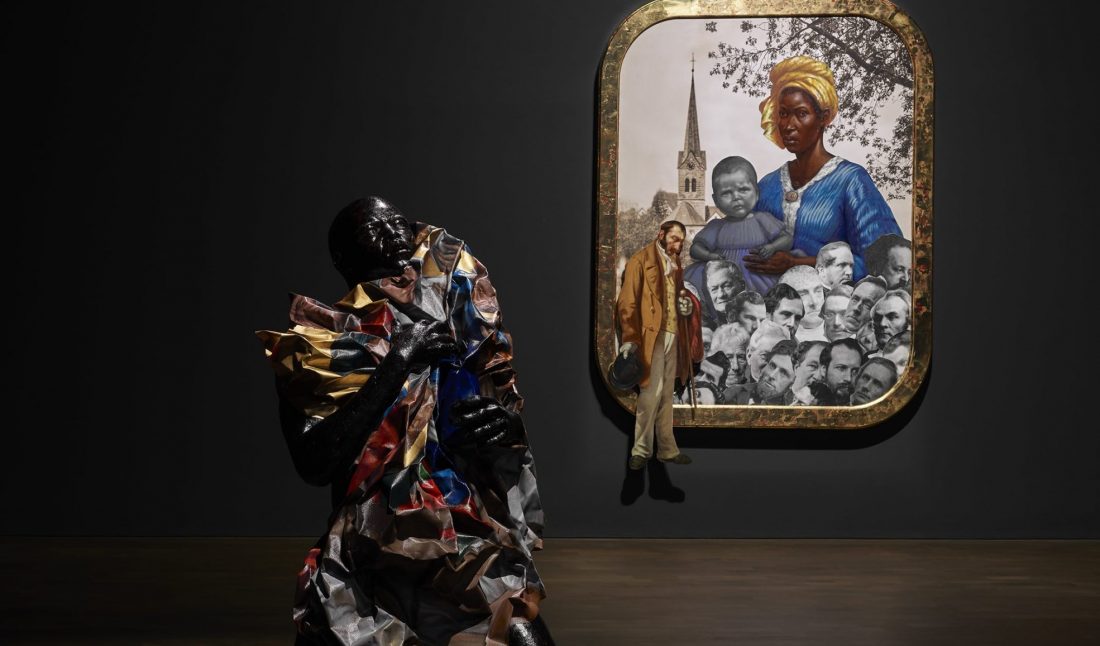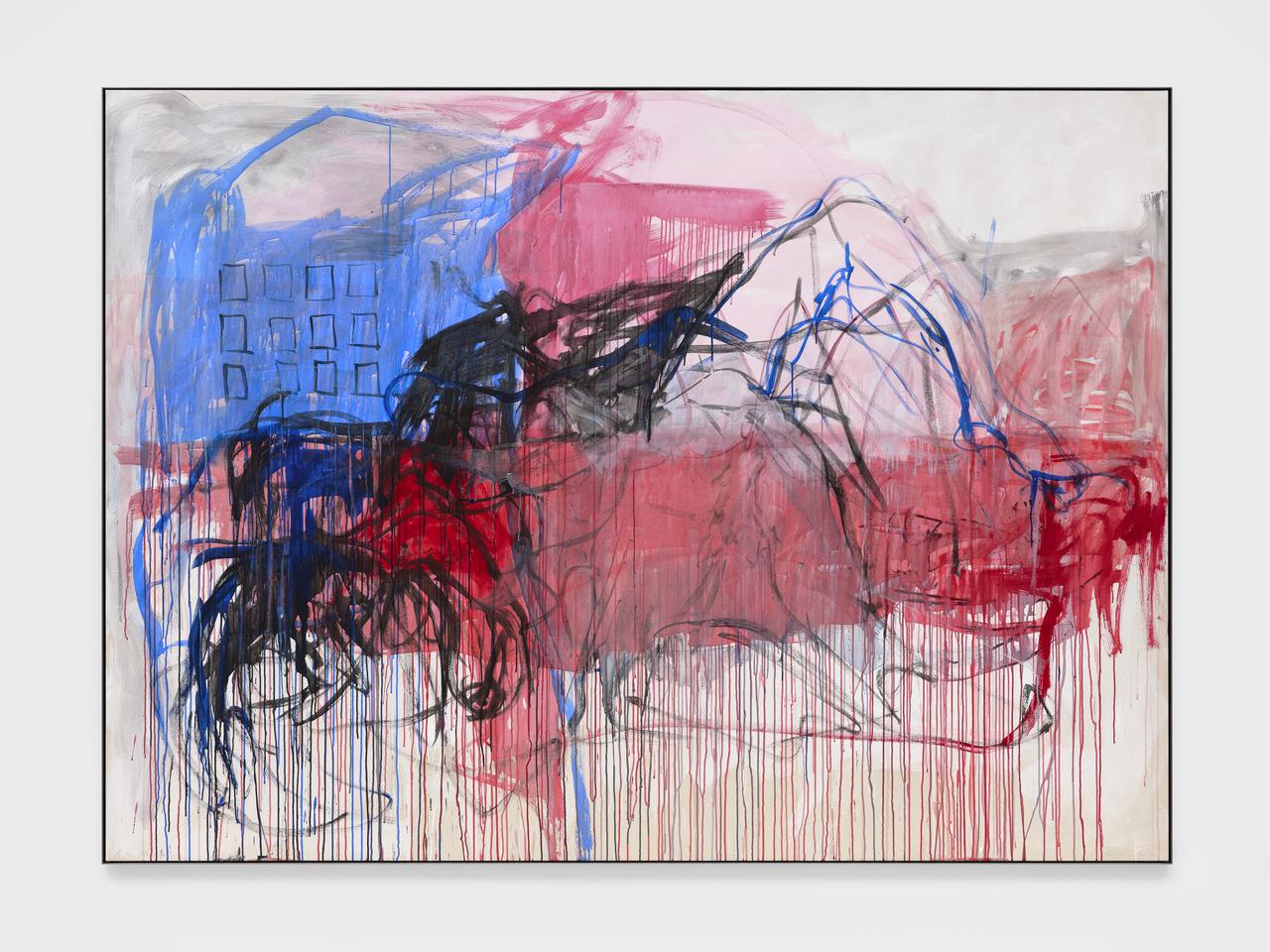Gagosian’s London gallery in Grosvenor Hill is currently showing new works by the artist Titus Kaphar in “New Alters: Reworking Devotions.” Open through May 15, the artist’s debut London exhibition is a departure from his visual oeuvre thus far, employing a new approach and technique for many of the featured sculptures and paintings.
As suggested by the title, Kaphar’s paintings are the result of the artist’s reexamination of historical representation, referencing the structures and imagery of existing works from the likes of John Chamberlain and James Van Der Zeewith a cut-and-paste approach and the artist’s meticulous sculpting and brushstrokes. Dually, the title references the chapel-like space that is the Grosvenor Hill gallery, and the intimate pairings and groups that make up the show.
The works pose historically-rich narratives, as is customary in Kaphar’s artistic practice, but departing slightly from the extensive research that typically builds the foundation of his series, the artist opted for intuition and trust in his craft to guide him through the narrative created here. To learn more about the pivotal works, Whitewall spoke to the artist.
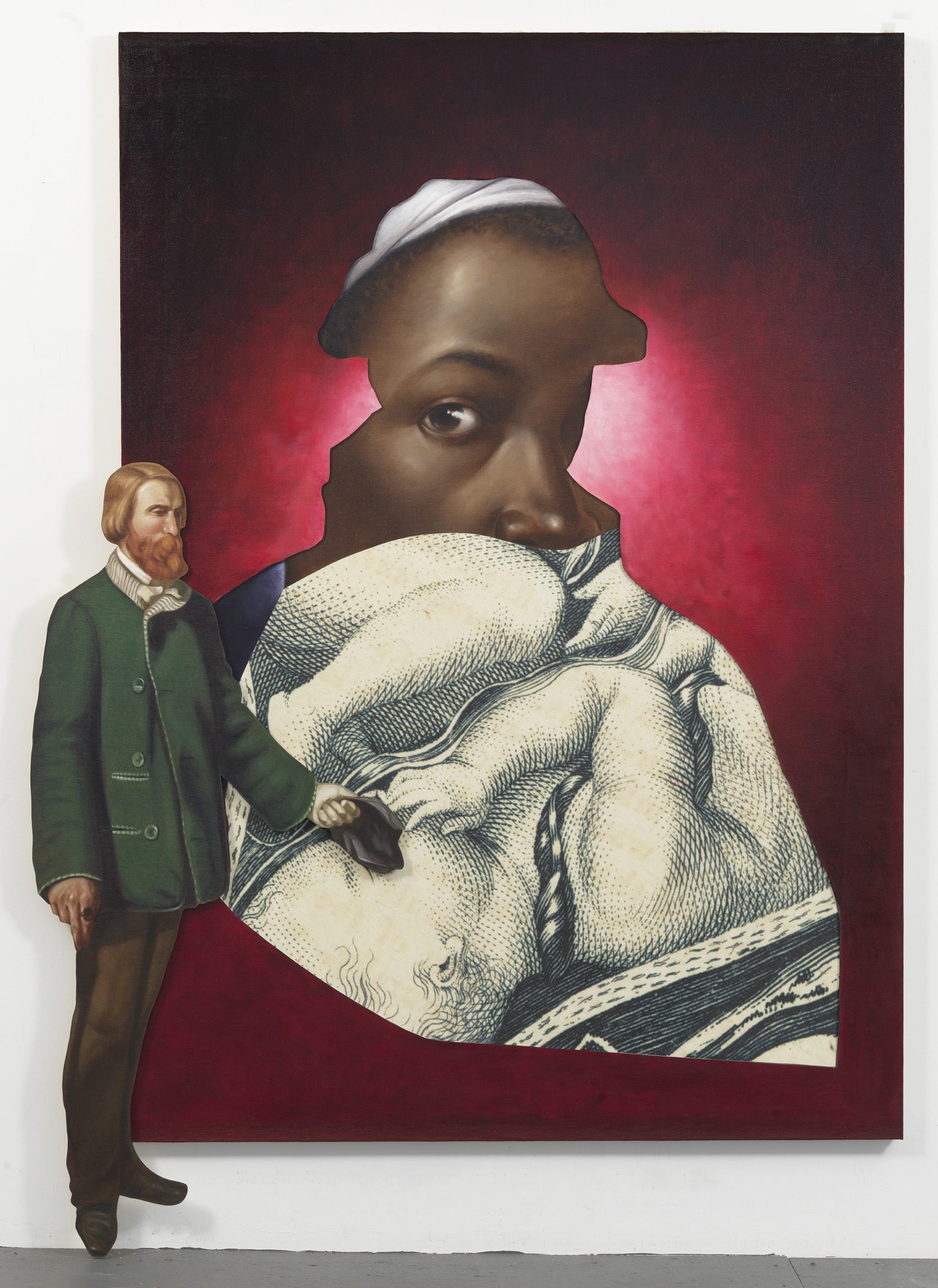 Titus Kaphar, “The Eye of Providence,” 2022, oil on canvas, vinyl, and wood, 94 x 67 1/4 x 2 3/4 inches; © Titus Kaphar, photo by Prudence Cuming Associates Ltd, courtesy of Gagosian.
Titus Kaphar, “The Eye of Providence,” 2022, oil on canvas, vinyl, and wood, 94 x 67 1/4 x 2 3/4 inches; © Titus Kaphar, photo by Prudence Cuming Associates Ltd, courtesy of Gagosian.
WHITEWALL: These works feel a little different from what we’ve seen from you. Some of the works have figures outside of the frames, for instance. What was the starting point for this exhibition?
TITUS KAPHAR: I usually go through this process before every exhibition where the work gets shipped out, and I go from having a completely full studio to having blank walls. And like with writers, the blank page can be intimidating. The work leaves, and I have to go through this process of convincing myself that I actually know how to make paintings. It feels ridiculous after decades of doing this, but I must confess. This is still my reality.
So I started doing this thing where, once I hit that depression, I would go to my bookshelves. I would pull off all of my books and start cutting up all of my photography and art history books and just start cutting out characters, background settings, any elements I wanted that I was even slightly interested in, and just started arranging them to find stories in a very surrealist approach to them. Not a plan, just trying to find stories.
I started arranging these collages on paper and discovering these bizarre stories and I just kept wanting to know more. And so I did lots of them. I made several of those years ago, it’s something I do kind of regularly. And this year I was looking at an image of one of those collages and just asked myself, what would it be like to make this thing full scale? What would it be like to take it from essentially almost a miniature to these figures being life-sized?
I didn’t know if I could do it but it was an interesting exercise. And I was really pleased with what came out.
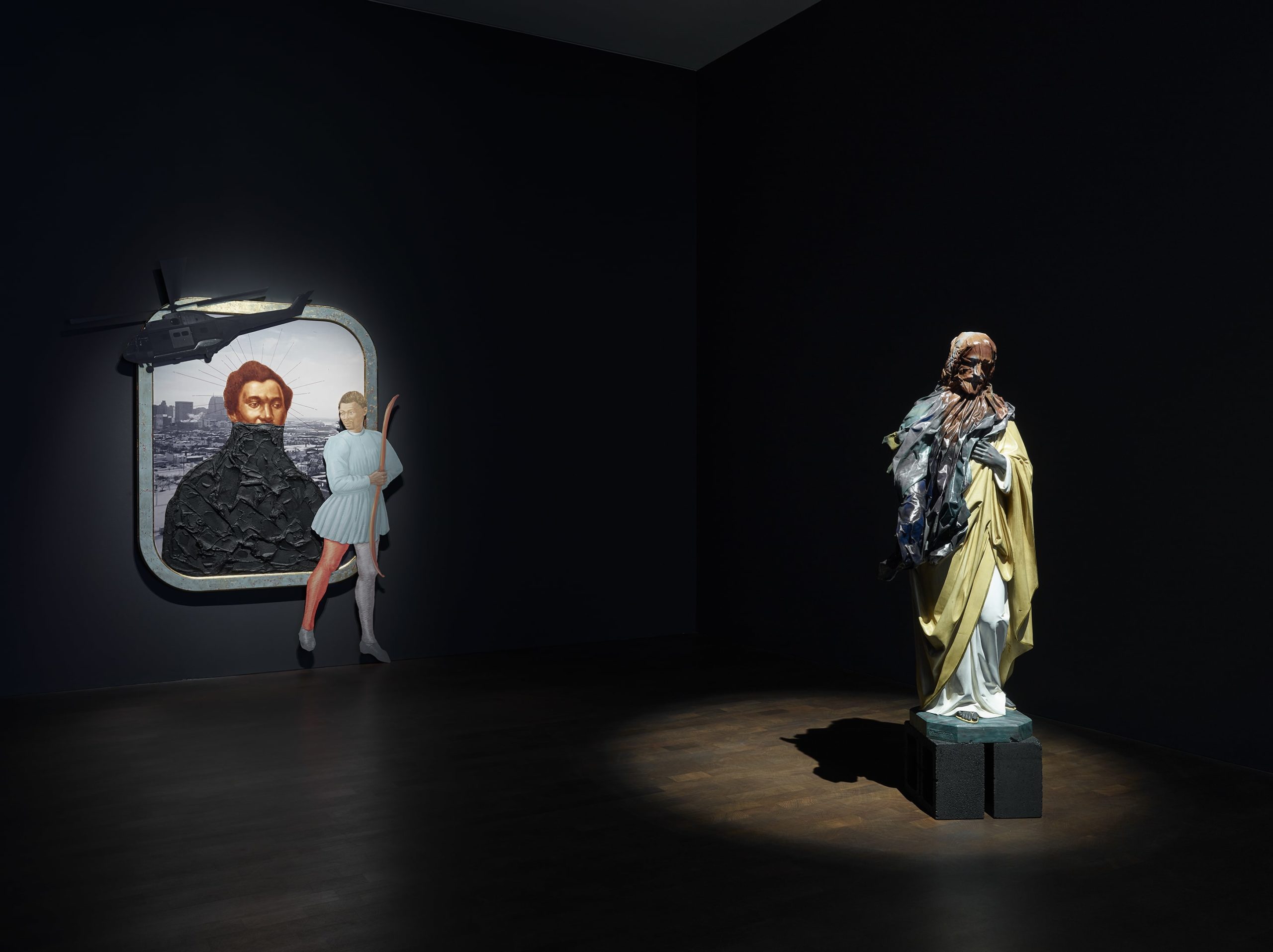 Installation view of Titus Kaphar’s “New Alte̲rs: Reworking Devotion,” courtesy of the artist and Gagosian.
Installation view of Titus Kaphar’s “New Alte̲rs: Reworking Devotion,” courtesy of the artist and Gagosian.
WW: It’s not unrelated to what you’ve done and there’s collage elements in this, but it takes it to the next level. Did you find it a little bit freeing, that you could add these things to your language?
TK: Absolutely. My work tends to be super research-based, a lot of reading, a lot of time thinking staring at things, and a lot of time in museums. And this wasn’t that process.
First, it required trust. It required me saying to myself, “You’re not crazy, there is actually something here. Take your time, look, and the piece will tell you where to go.” And so I gave myself to that process and it was incredibly fulfilling. And once I got over the trust issue, then it was freeing.
WW: Did you come across anything new or interesting once you realized you were able to create something viable through this process?
TK: The surprising thing for me was how much religious connotation the works had. I can’t help but feel that if I had asked a psychiatrist why that is, that psychiatrist might say, because the closest person to you in your life who is the most religious, which is my grandmother, passed away this year, and this is your way of engaging her. But as I look now at the work complete, there’s absolutely this almost—well yeah, altar.
I’m not a Christian in that way, I don’t practice, but the people who have been most meaningful in my life and have had the most impact on my life, are people who are deeply devout. So I think of myself as continually exploring and learning, and the closest spiritual practice to me is my grandmother’s and so that’s really where this work comes out of.
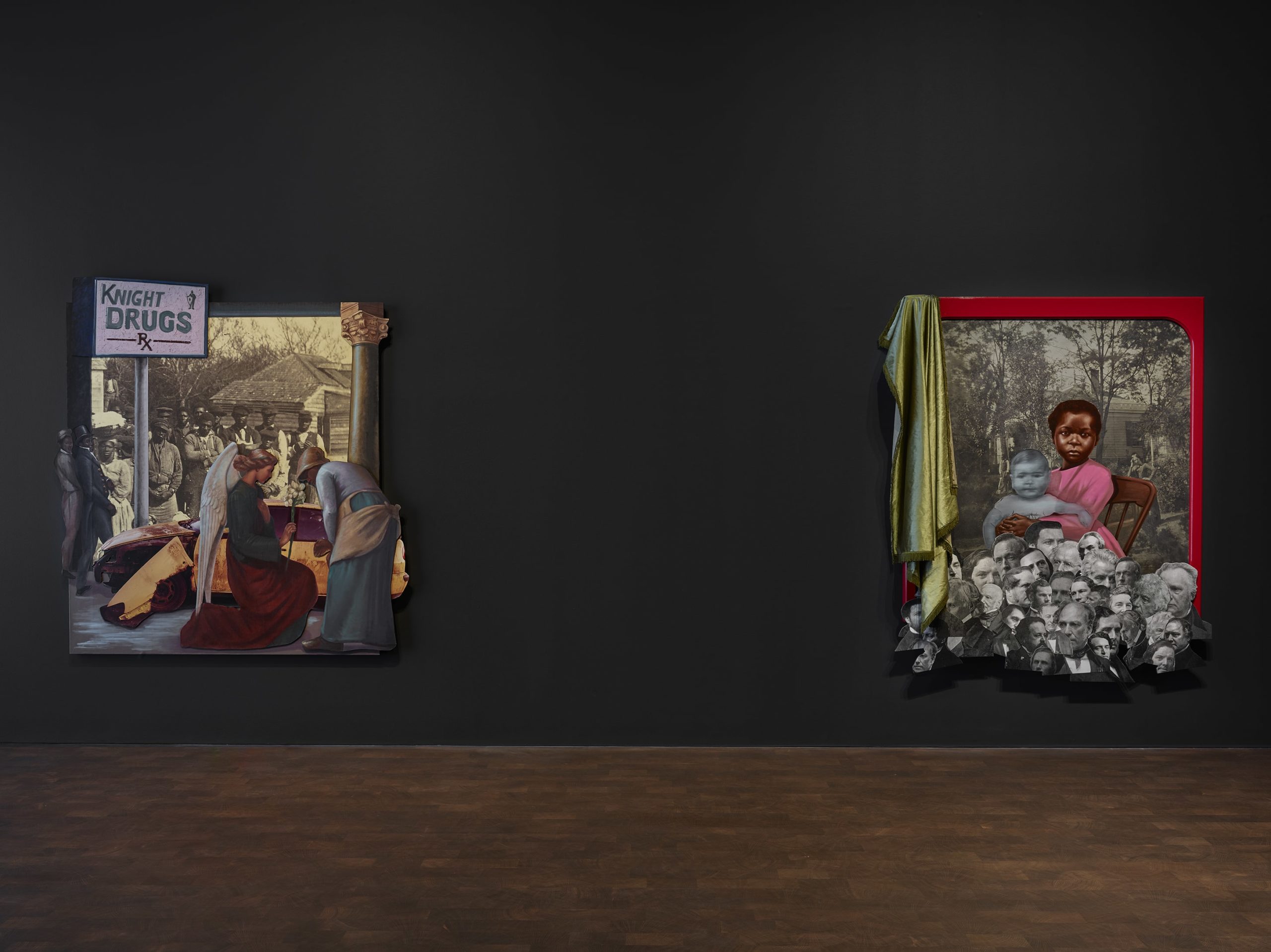 Installation view of Titus Kaphar’s “New Alte̲rs: Reworking Devotion,” courtesy of the artist and Gagosian.
Installation view of Titus Kaphar’s “New Alte̲rs: Reworking Devotion,” courtesy of the artist and Gagosian.
WW: That then lead to the impulse to make the installation feel chapel-like?
TK: I think that’s two-fold. I think it’s that most definitely, but it also goes comes from having spent some time at the Rothko chapel and just thinking about Rothko’s idea that he was talking about how he felt like every painting should be experienced on its own in this way.
I think of it like a painting being its own universe and having this gravity and this force. And when you put other things too close to it, it either sucks it in or pushes it away. So sometimes it’s nice to create a sort of isolation of an image to be able to experience it. In the exhibition, I try to create these little vignettes and moments of isolation in the show.
WW: How does the gallery space lend to the exhibition’s effect?
TK: That’s why I love that space. I’ve been to several Gagosian spaces but I hate to say it, I think this is the best one. I love the way the light comes in; I love your proportion to the space. It feels manageable. Some of Gagosian’s spaces feel overwhelming. And there’s power in that but that’s not what this work is for.
I’ve been spending a lot of time looking at religious work, looking at churches and chapels and thinking about the thousands of years of architectural experience with guiding an individual through a spiritual experience to a spiritual moment, and thinking about this procession down the altar to a thing. Religious or not religious I think that is a strategy, a device, that is effective on us, that can be effective on us.
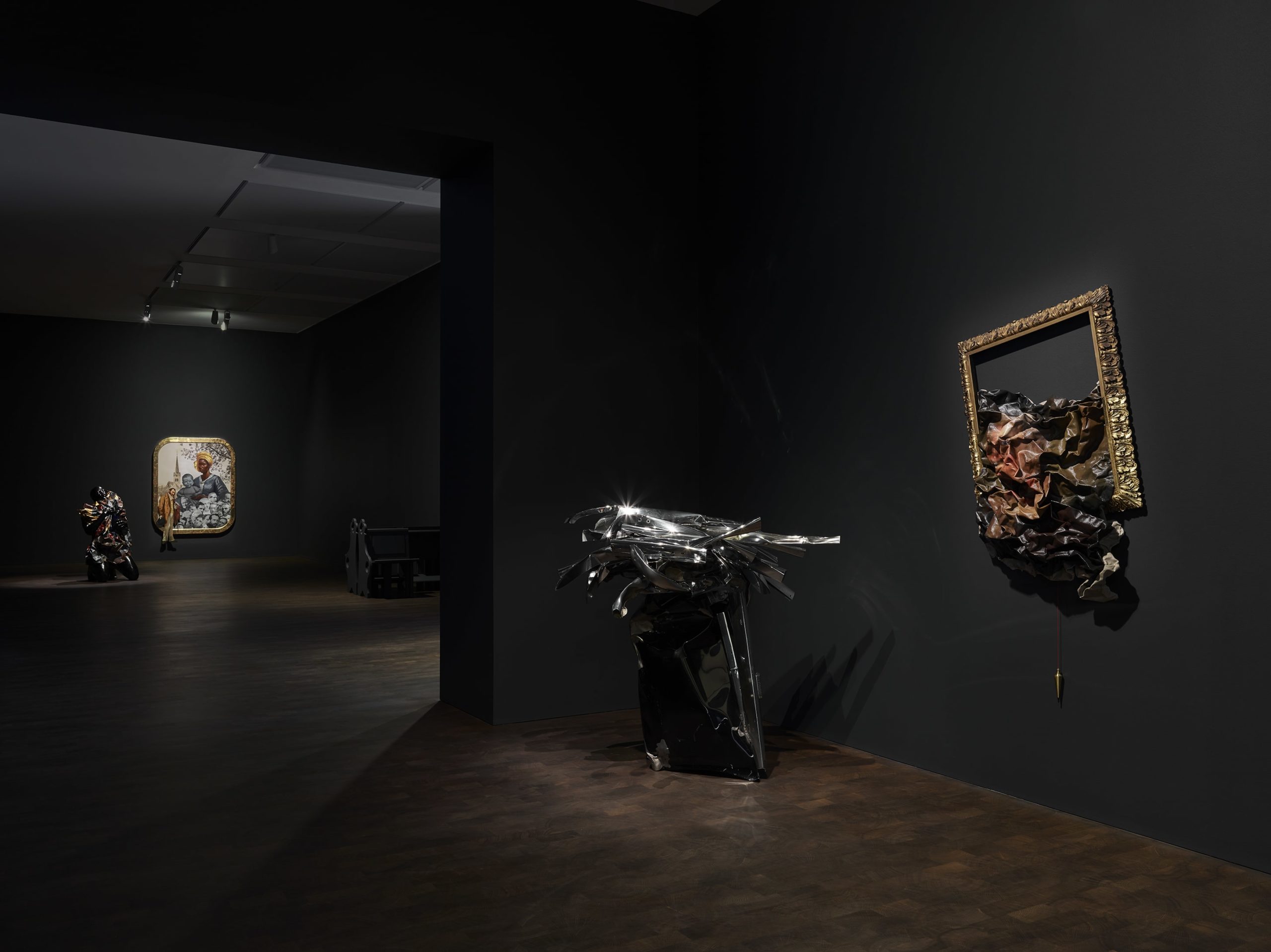 Installation view of Titus Kaphar’s “New Alte̲rs: Reworking Devotion,” courtesy of the artist and Gagosian.
Installation view of Titus Kaphar’s “New Alte̲rs: Reworking Devotion,” courtesy of the artist and Gagosian.
WW: How did then the process of adding your signature to works—the crumpling, the weaving, anything like that—tell the story that needs to be told?
TK: I took a book, crumpled a page. And then I sat it down and was like huh, that’s an interesting form. Now I know why Frank Gehry knows what he does. Now I know why Chamberlain does what he does.
I think more than anything I’ve ever done, this was about discovery for me. I think the exercise for me was the going back to that trust. And being okay with not knowing initially. I don’t know if it is always going to work, but in this case it worked.
And so that was really the thing for me—I want to keep looking. I want to make things that keep me questioning and that piece in particular just confused me for the longest, longest time. I feel like I have a sense of where all of this stems from but that particular work was more just like, “Okay, I’m going to trust, I’m compelled.”
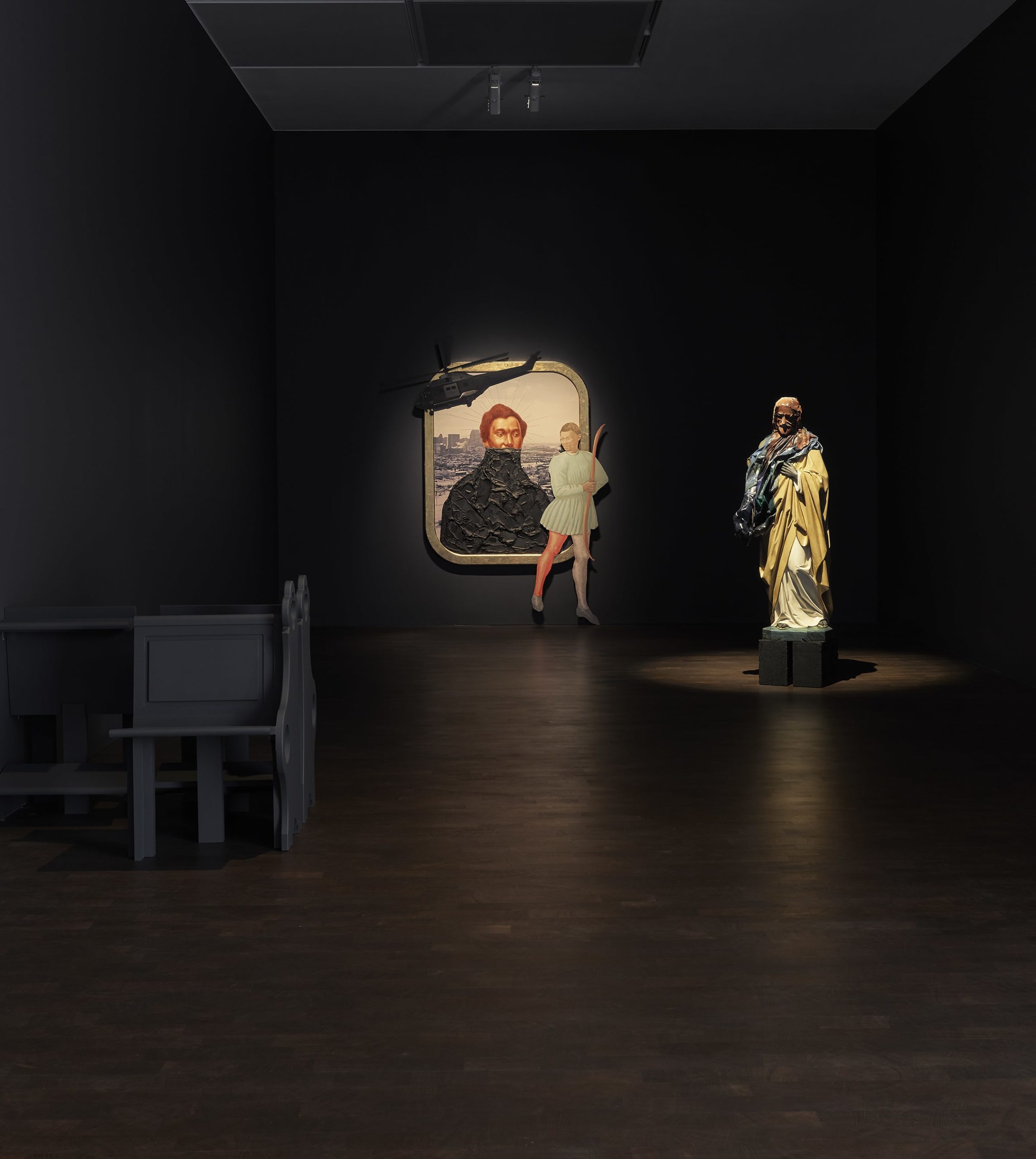 Installation view of Titus Kaphar’s “New Alte̲rs: Reworking Devotion,” courtesy of the artist and Gagosian.
Installation view of Titus Kaphar’s “New Alte̲rs: Reworking Devotion,” courtesy of the artist and Gagosian.
WW: So, is everything out of the studio right now?
TK: Yes, but I found a hack. I don’t know why it took me forever to learn this trick [but] I realize as long as I have a painting that is in the process when all the other work is shipped, I’m good!
But the thing that is sort of problematic, is that when I do that, I never take a break. I just keep painting. I’m hoping London is a moment for me to separate, get away from the studio, let the new ideas filter in, new people filter in.







